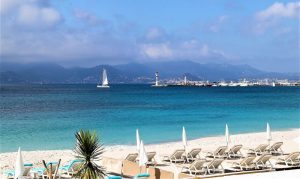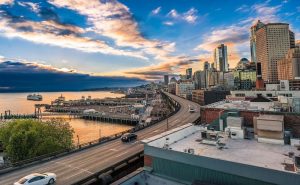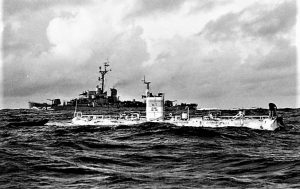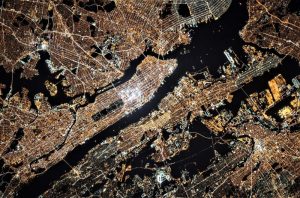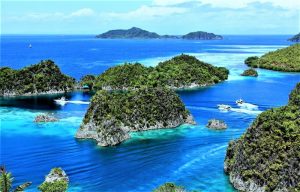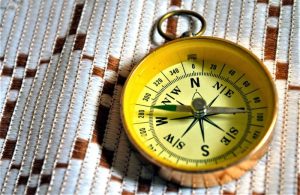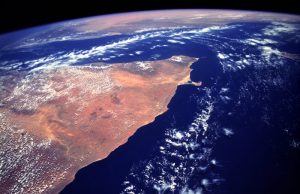Mediterranean Sea
The Mediterranean Sea is a sea located in the Atlantic Ocean that lies between the continents of Europe and Africa and is almost completely enclosed by land. It is bounded in the north by Europe, in the south by Africa and in the east by Asia; and it joins the Atlantic Ocean through the Strait of Gibraltar.
What is the Mediterranean Sea?
It is an intercontinental sea because it is located between Europe, Asia and North, East and South Africa. It is connected to the Atlantic Ocean which provides water through the Strait of Gibraltar.
In the branch of oceanography, the Mediterranean Sea is also sometimes called the Euro-African Mediterranean Sea or the European Mediterranean Sea, to distinguish it from Mediterranean seas elsewhere.
- Location of Mediterranean Sea
- History of Mediterranean Sea
- Civilizations
- Characteristics
- Mediterranean Sea countries
- Featured Islands
- Fauna
- Flora
- Contamination
- Importance
- Seas that make up the Mediterranean Sea
- With which seas and oceans does the Mediterranean Sea communicate?
- Why it is called the Mediterranean Sea?
Location of Mediterranean Sea
The Mediterranean Sea lies between the continents of Europe, Asia and Africa and separates and connects the continents at the same time. It is found bathing the coasts of Algeria, Greece, Bosnia and Herzegovina, Croatia, Egypt, France, Israel, Italy, and other countries. In its southern part it is linked to the Red Sea by means of the Suez Canal.
It is located where the African and Eurasian plates are connected.
History of Mediterranean Sea
It was formed by geological movements. As it is located above the plates, different volcanoes and marble quarries were formed. In ancient times it was thought that it was a remnant of the sea of Thetis, during the Jurassic period and late Cretaceous the plates formed what we know today as Africa, Arabia and India and closed the ocean Thetis.
According to geologists, the Mediterranean was already formed and began to close due to the rapprochement of Africa with Europe which produced the evaporation of water drying the basin. Then, it was filled again thanks to the flood of Zancliense.
Civilizations
The first civilization was Sumerian in the 4th millennium B.C. and some time later the civilization managed to expand into Syria, Lebanon and Israel. These civilizations managed to advance in agriculture and animal domestication. Later the Assyrian, Hittite and Asia Minor empires developed. The first cities along the rivers were enriched by maritime trade.
Another important civilization that developed was the Greek, which was located northeast of the Mediterranean, in what we know today as Greece, Turkey and some islands like Rhodes and Sicily.
Characteristics
The most notable characteristics of the Mediterranean Sea are the following:
- Its 46,000 km of coastline bathe the coasts of Spain, France, Italy, Croatia, Albania, Greece and Turkey on the north coast.
- There are no tides in the Mediterranean Sea
- It has a very small swell.
- Its waters have little amount of nutrients due to the low flow that are the rivers that reach it.
- Overfishing and high pollution
- It represents 1% of the surface of the oceans.
- It measures 2.51 million kilometers.
- The surface temperature of the water depends on the season in which it is located. In winter it can reach up to 10°.
- The salinity of its waters is approximately 38%.
- It is divided into two different basins by means of an underground barrier that goes from Tunisia to Sicily.
- It is a quite warm sea, with a lot of rain in the autumn and hot and dry summers.
- The average rainfall of the Mediterranean Sea is 630 millimeters per year.
Mediterranean Sea countries
The countries close to the Mediterranean Sea are as follows: Spain, France, Italy, Croatia, Albania, Greece and Turkey on the north coast, Lebanon, Syria and Israel in the east, Egypt, Libya, Tunisia, Algeria and Morocco in the south.
Featured Islands
Several small islands can be found. Some of them are:
- Large islands such as Sicily and Sardinia, located in the western central part.
- Middle islands such as Cyprus, Corsica, Crete, Mallorca, Lesbos and Rhodes.
- Small islands such as Chios, Kefalonia, Corfu, Lemnos, Samos, and Andros in the eastern Mediterranean; Cres, Krk, Pag, Malta in the central Mediterranean; Menorca and Ibiza in the western Mediterranean; and Djerba on the African coast.
Fauna
In the Mediterranean Sea we can find different marine species. Starfish, snails, thrush fish, octopuses and many marine animals such as fish, cnidarians, mollusks, echinoderms, reptiles such as sea turtles, algae and mammals.
In the past, monk seals could be found, but this species is currently in danger of extinction and few of them remain.
Flora
It has a forested sclerophyllous tree canopy with species of the genus Quercus mainly the holm oak. As for shrub vegetation, Kermes oak is abundant. It has a great quantity of arbutus, lianas, peregrine blonde, and others that depend on the humidity of the ecosystem.
In the southeastern areas of the peninsula you can find species like the North African vegetation. When the climate is cooler and the aridity of the summer decreases, wooded structures with predominantly oak groves emerge.
Contamination
The Mediterranean Sea is one of the seas with the highest pollution rates on the planet, mainly caused by the hydrocarbons that are discharged into its waters. It is considered that, per year, the sea receives between 400,000 and 500,000 tons of oil which further contaminates its waters.
Pollution directly affects the marine fauna of the planet, because in this sea, is the largest number of marine species. Garbage and plastic bags also join the pollution process. Marine currents drag more garbage into the sea, and climate change also affects its waters.
Importance
It is an area of great economic importance because it has a strong influence of maritime networks of trade, tourist exploitation with Mediterranean cruises and cities of interest that are very visited during the summer. Its waters, besides bathing the coasts of Europe, form an important connection with Africa.
Seas that make up the Mediterranean Sea
The Mediterranean is formed by several seas that still maintain their name through the centuries, among them are:
- Ionian Sea
- Tyrrhenian Sea
- Liguria Sea
- Adriatic Sea
- Aegean Sea
- Sea of Crete
With which seas and oceans does the Mediterranean Sea communicate?
The Mediterranean Sea communicates with the Atlantic Ocean through the Strait of Gibraltar, with the Black Sea through the Straits of the Bosporus and the Dardanelles and with the Red Sea through the Suez Canal.
Why it is called the Mediterranean Sea?
The word Mediterranean comes from Latin and means “in the middle of lands“. Its name was given because it occupies a central extension between countries, continents and different cultures, as its waters are found bathing the southern part of Europe, Western Asia and North Africa. In addition, in its waters emerged cultures as important and relevant as the Greek, Roman or Egyptian.
How to cite this article?
Briceño V., Gabriela. (2019). Mediterranean Sea. Recovered on 23 February, 2024, de Euston96: https://www.euston96.com/en/mediterranean-sea/
